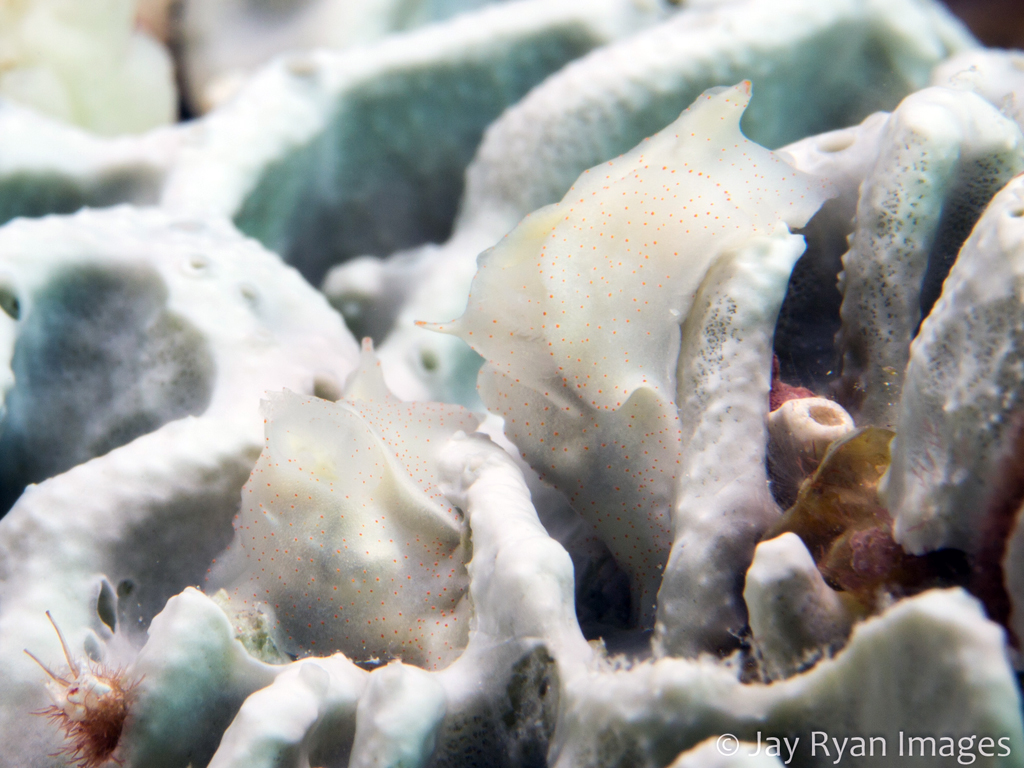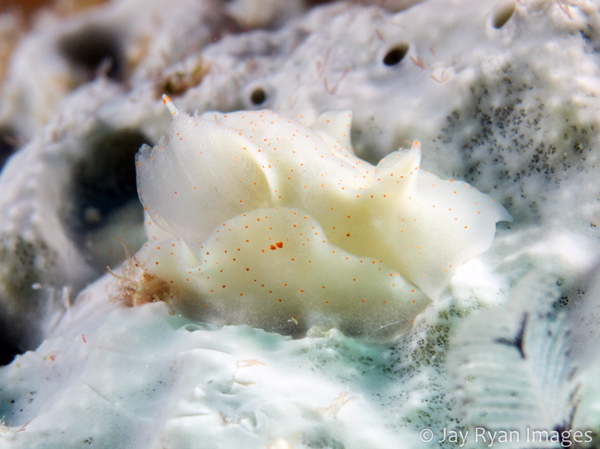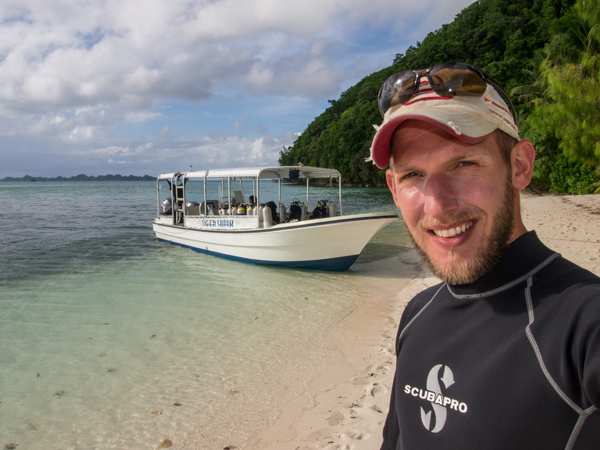 |
Sagaminopteron bilealbum
Image courtesy of Jay LordLagoon of Kwajalein Atoll, Marshall Islands
 |
Sagaminopteron bilealbum , Carlson & Hoff, 1973 (revisited)
Sagaminopteron are relatively small cephalaspideans with a small internal shell. They lack a gizzard, but have a radula. They are capable of swimming by flapping their large parapodia. Some species feed on sponges whereas others are probably generalist carnivores. Sagaminopteron is characterized by having a funnel shaped siphon with an internal crest and a relatively broad body, Siphopteron and Gastropteron also have a siphon with a medial ridge but the former has a smaller body size and a rounded visceral mass and the latter a reduced number of teeth. Sagaminopteron bilealbum is opaque white with scattered orange spots. There is a series of tubercles over the surface of the body. Reaching 15mm in size it is found intertidally on a greenish white sponge, Dysidea cf. herbacea. Originally know only from Guam, with Jay's find we can now add Kwajalein Atoll, Marshall Islands to its geographic range.
Sammamish, WA 98074 Mar., 2015 Send Dave email at davidwbehrens@gmail.com
|
Jay Lord on location

I began diving in 2010 on the little island of Gili Trawangan, Indonesia. Soon after I was lucky enough to get a job on the island of Kwajalein in the Republic of the Marshall Islands. Here I spend every weekend diving the wrecks, reefs, coral heads and sand flats in the warm blue water in search of nudibranchs and other odd critters. My favorite place to search for nudibranchs are the algae and sponge covered buoy lines that mark the location of a dozen or so wrecks scattered across our lagoon. About a year ago I upgraded from a point-n-shoot camera to an Olympus E-PM1. I love to shoot super macro with the 60mm macro lens and a Subsee +10 diopter. Unfortunate for me, I only had the 14-42mm kit lens with me on this dive. I found the Sagaminopteron bileabum while diving a large coral head in the middle of the Kwajalein lagoon. The top of the coral head is well lit as it is only 3 meters deep. There was a white-gray sponge that grew in patches across the flat areas of coral. Soon after finding the first specimen, I discovered seven more bunched together about 2 feet away. Approximate length of all specimens was 10-12mm. I was shooting with the 14-42mm kit lens at 42mm with a Subsee +10 diopter, using 2x Inon Z240 strobes. |

|
